On a visit to the Costa del Sol in Spain, we drove up into the hills to visit Ojén near Marbella, one of the so called Pueblos Blancos of Andalucia. After the busy and heavily developed landscape of the coastal strip, it was a pleasure to escape into more natural surroundings and see something of traditional Spanish life.
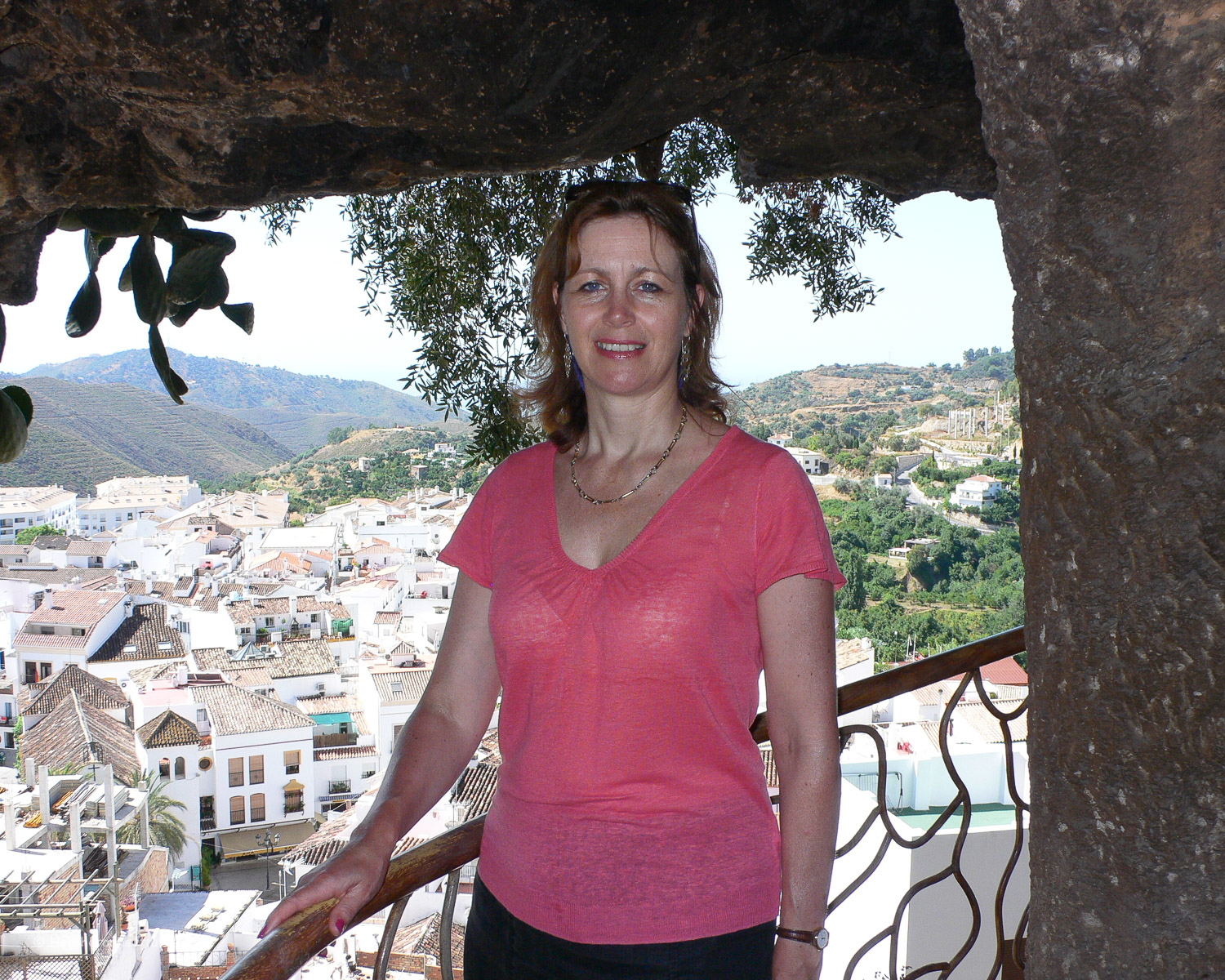
This article may contain affiliate links that provide commission on purchases you make at no extra cost to you. As an Amazon Associate I earn from qualifying purchases.
Anaducia’s White Villages
The Pueblos Blancos are the hill-side villages of Andalucia, known for their whitewashed exteriors. They sparkle bright against a landscape that’s scorched by the summer sun.
The best known Pueblos Blancos are in the hills between Arcos and Ronda. Being just a short drive inland from Marbella, Ojén is a popular village for short driving tour on a loop that also takes you through Monda and Mijas.
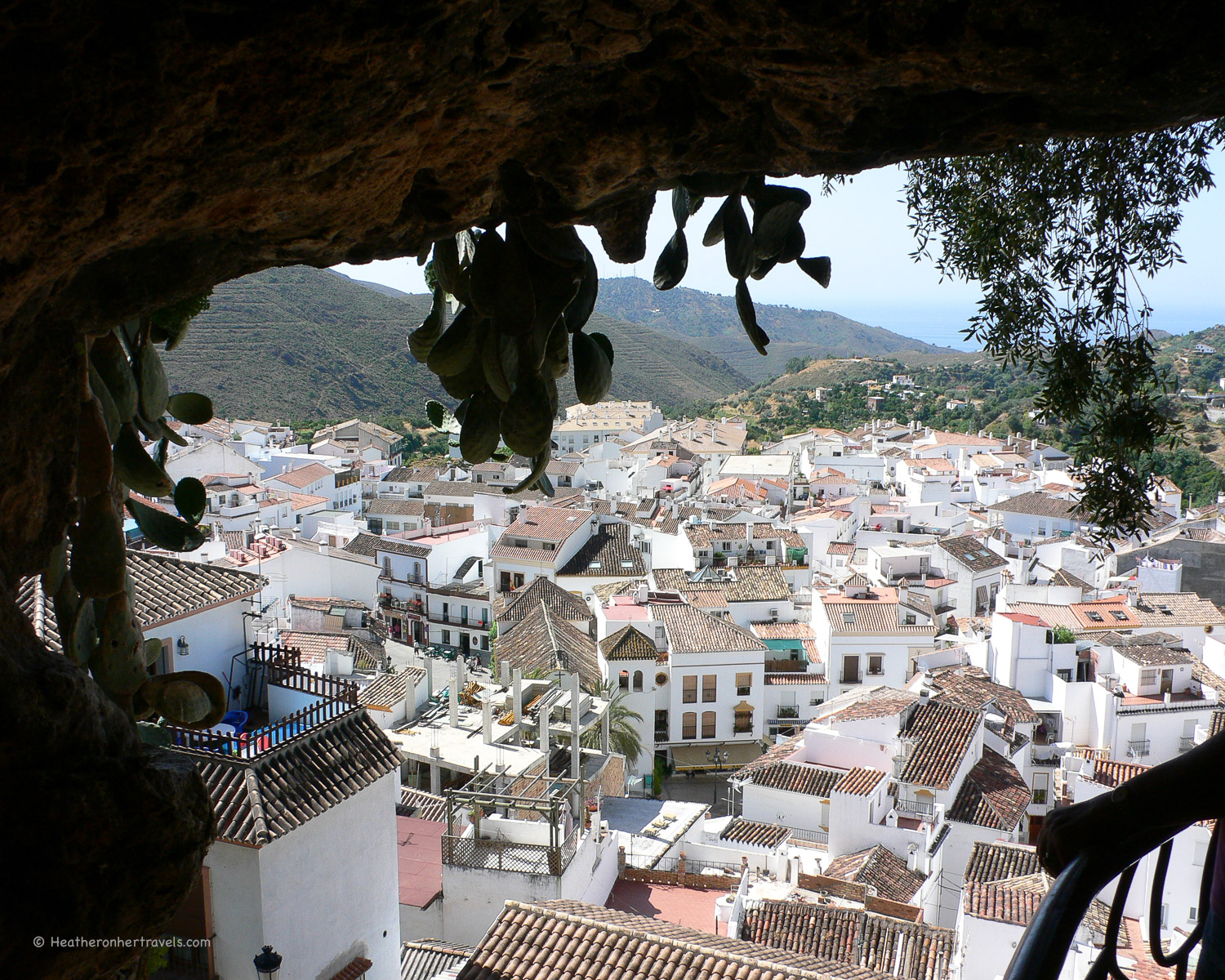
We parked on the road at the top of the town and climbed up some steep steps up to a little viewing point in a small cave with a great view over the town.
On the way up I was sure we would end up in a cafe. It seemed unlikely that anyone would go to the trouble of creating these steps just to give us the view for nothing, but that turned out to be the case.
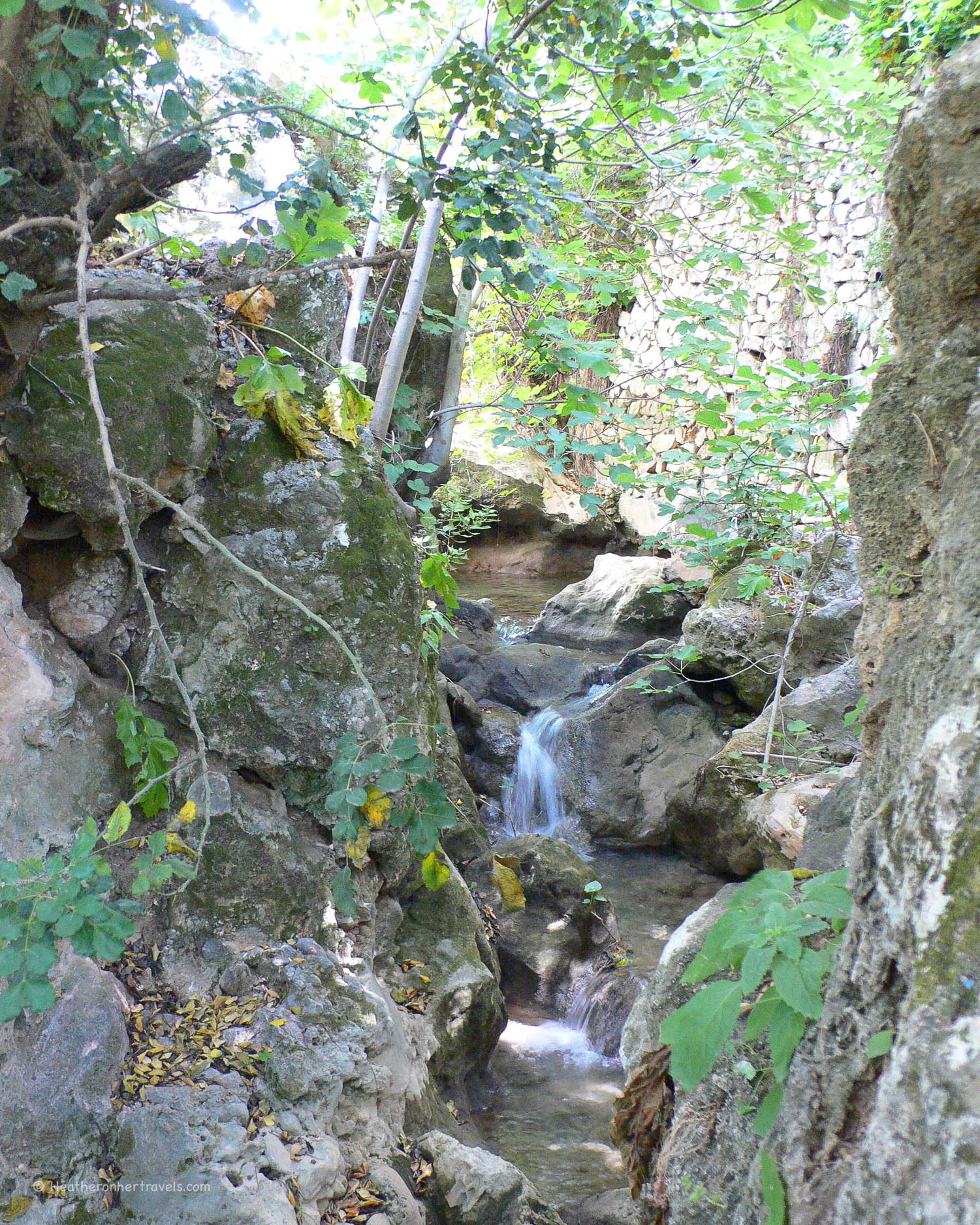
I got the impression that the village was taking great care to make the town an attractive place for tourists. These caves seemed to be a feature of the town as we passed a number of others on our walk around Ojén. They made a cool, shady contrast to the heat of July.
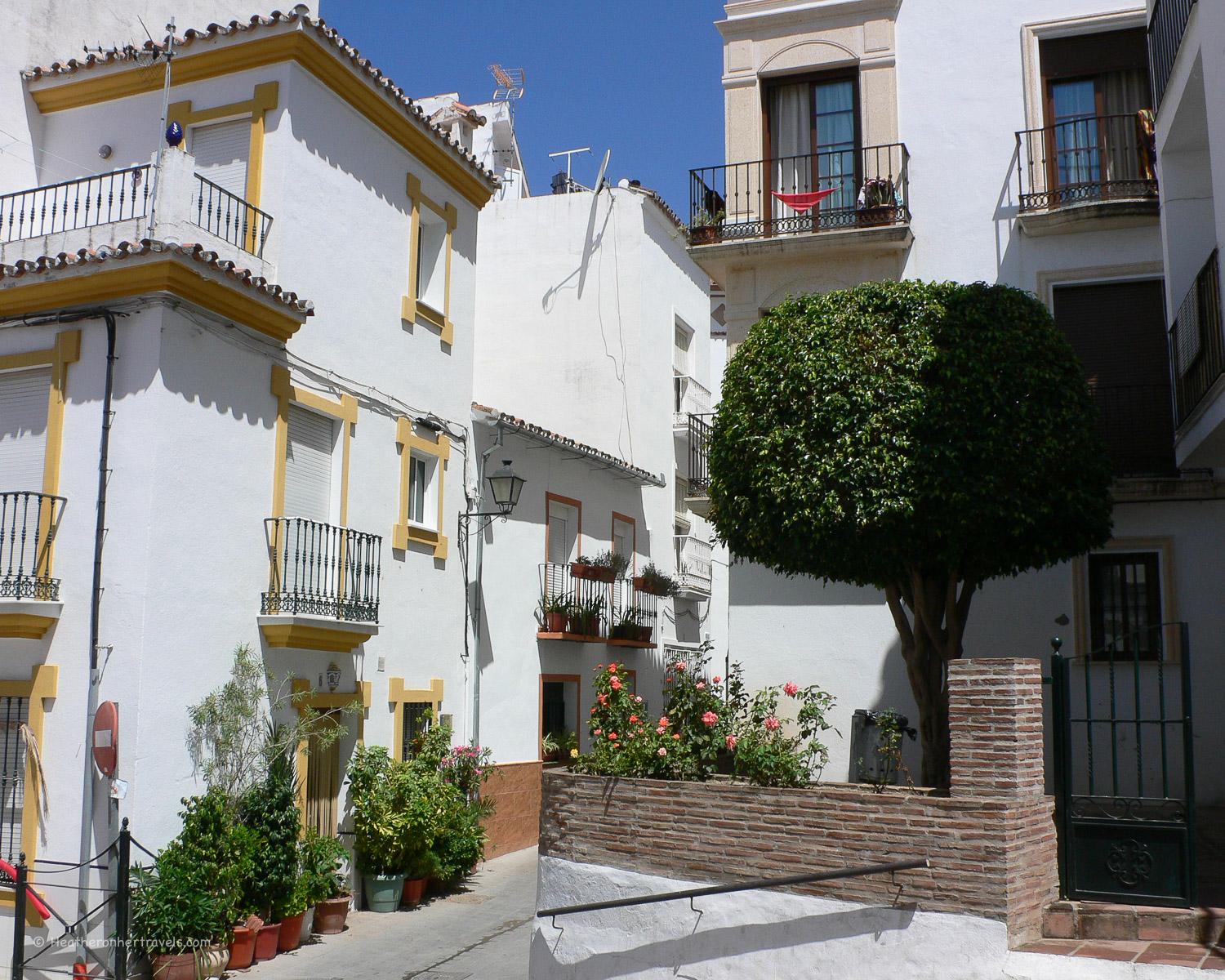
We found a way into the narrow lanes of the older part of town that are definitely not designed for cars. On some of the wider roads we did see residents’ cars tucked in and wondered how on earth they’d got there.
Read More: 10 festive reasons to visit Malaga, Spain at Christmas
Church of Our Lady of the Incarnation
The first stop of note was the church of Our Lady of the Incarnation in a small square. We learned from a sign outside that there had originally been a mosque on the site, which was rebuilt as a church by the bishop of Seville at the beginning of the 16th century.
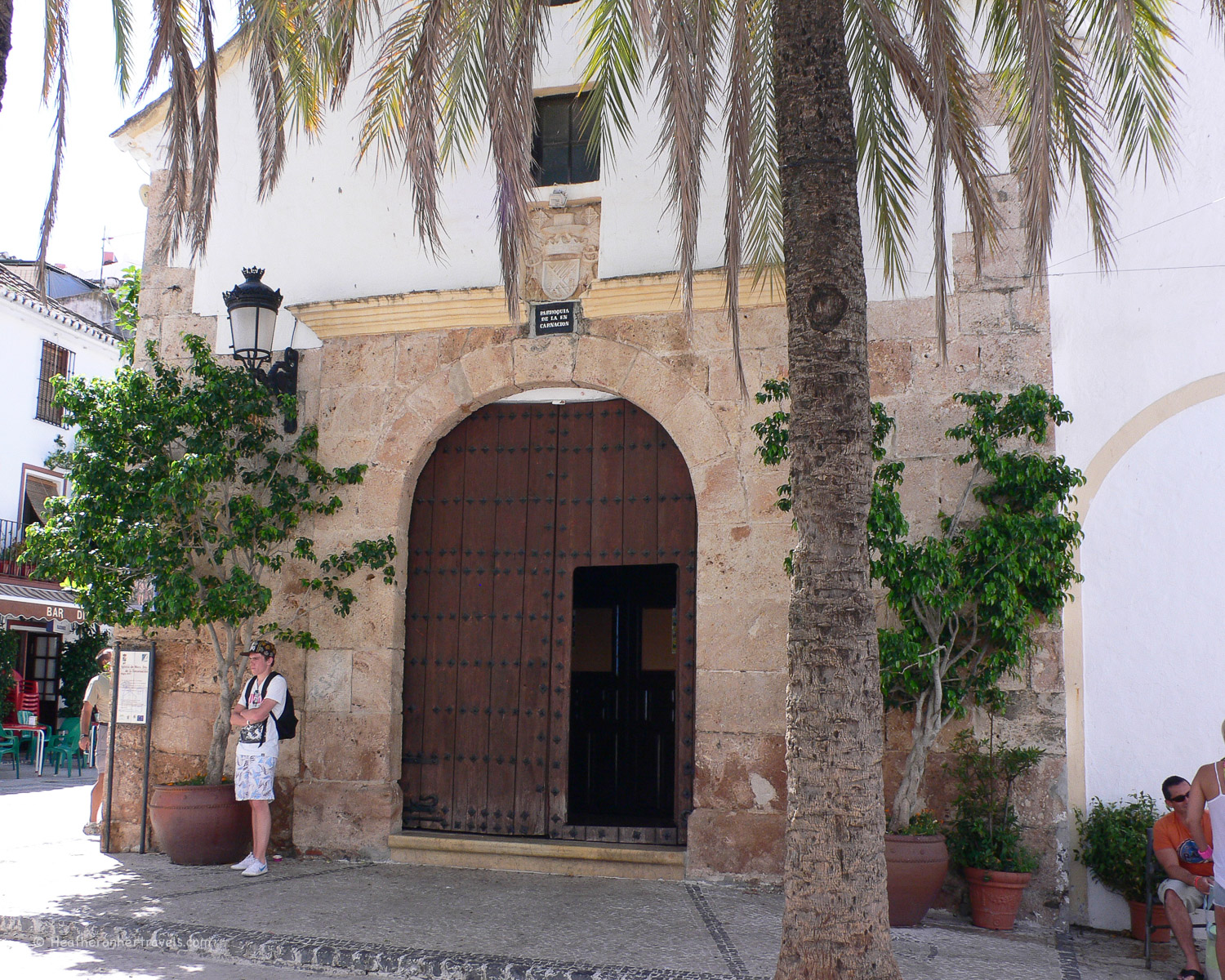
On going inside we found some rather scarily life-size figures of Our Lady and Jesus, like overgrown dolls dressed in richly embroidered velvet robes.
Then we walked around the church several times trying to work out which of the several cafes nearby would be the best to sit and have a drink in. It was a toss-up between the one with the fast food signs or the one with all the old men sitting outside. We settled on yet another just below the church with a small terrace and sun umbrellas.
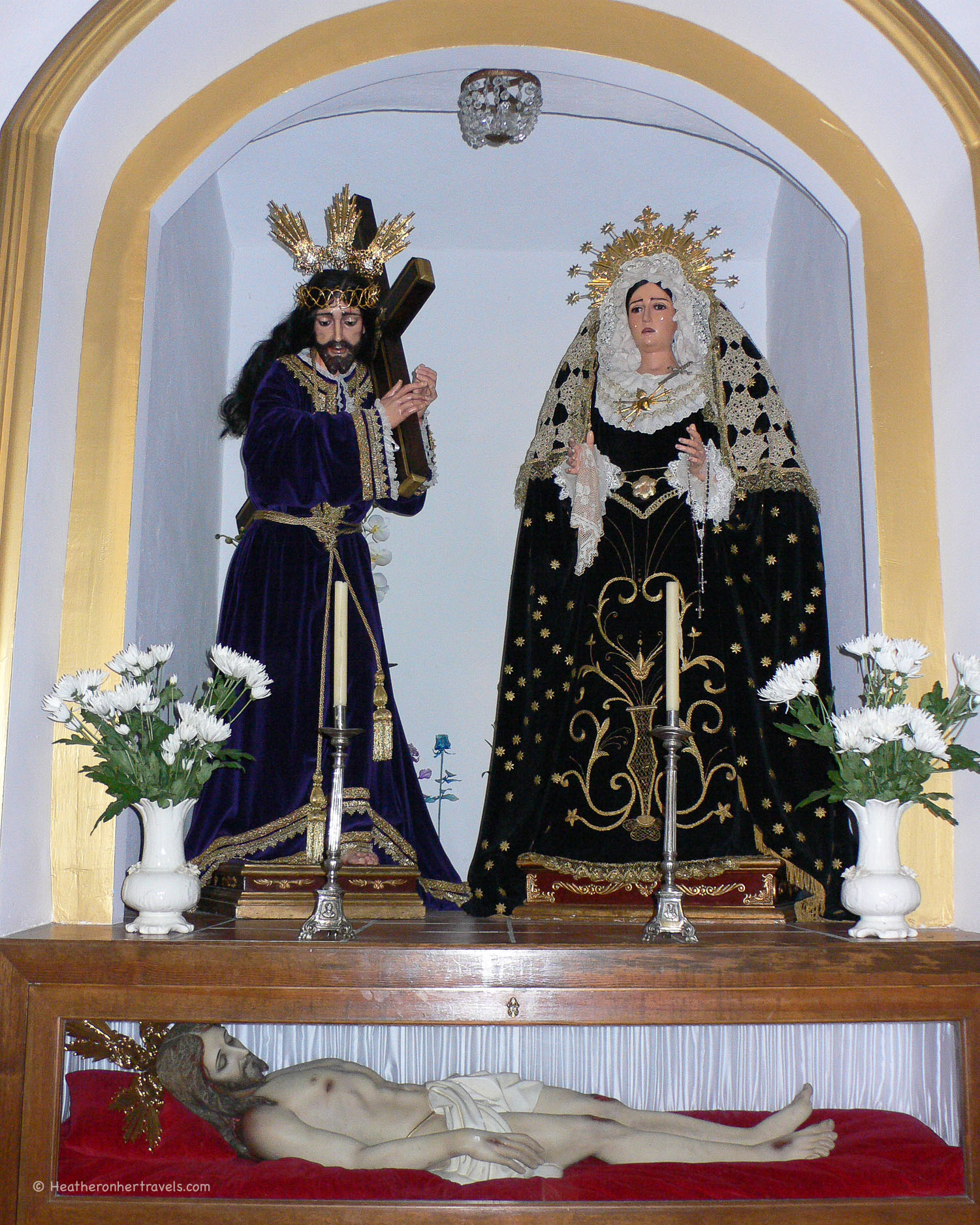
We had just ordered our drinks and were nibbling on some olives when the workmen nearby started drilling. Luckily repairing buildings in hot weather is slow work and they took frequent breaks with a burst of song in between the hammering and banging.
We thought we’d better explore a few more picturesque alleyways before we left and on asking directions, discovered that there was a small museum further down the town.
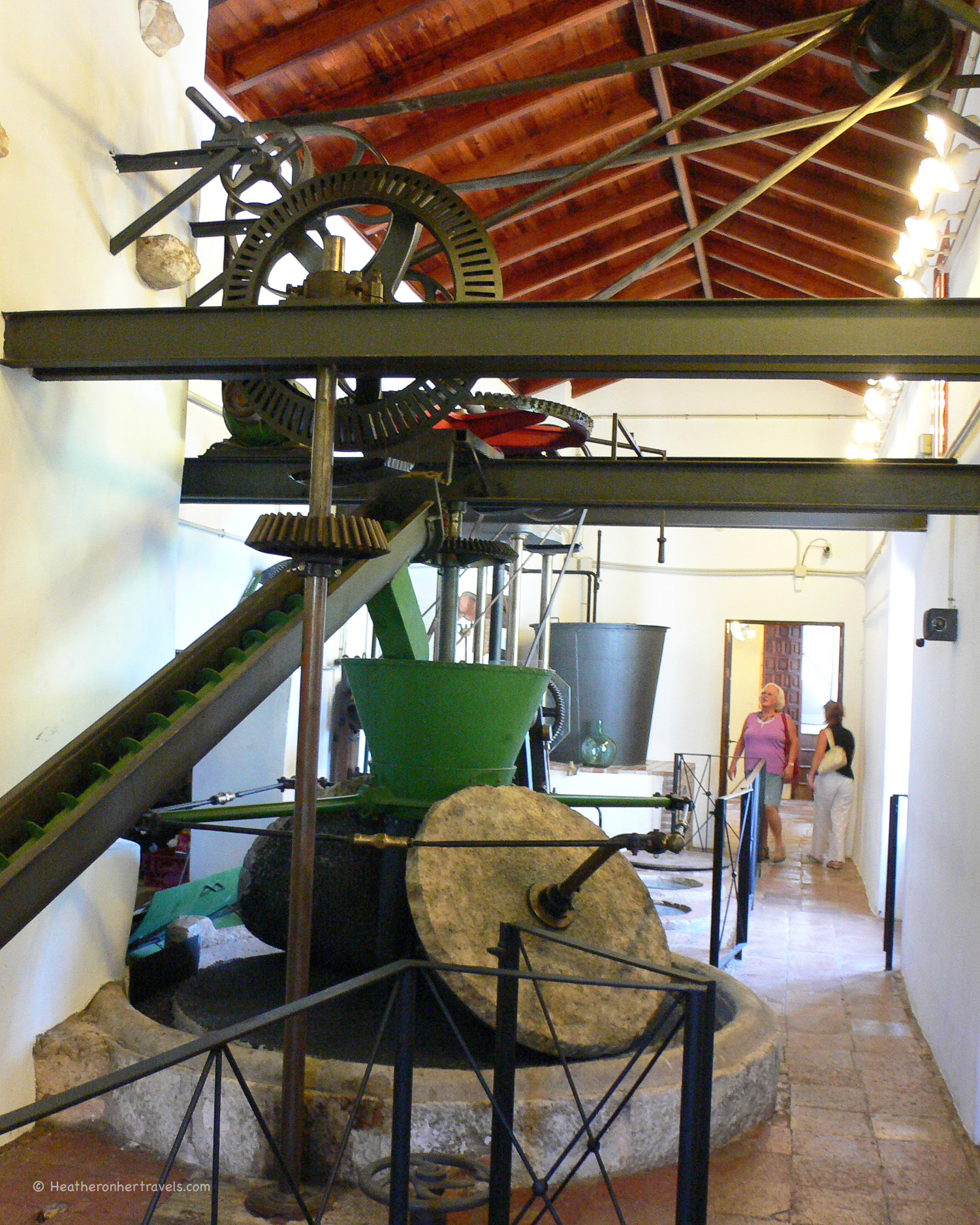
El Molino Museum
The El Molino museum is set in an old mill that once produced olive oil. In a former existence it had also been a factory for aguardiente, the anise flavoured liqueur for which Ojén was once famous.
The museum is free to enter and houses various bits of agricultural machinery relating to the olive production. It doubles up as an exhibition centre for local artists and photographers.
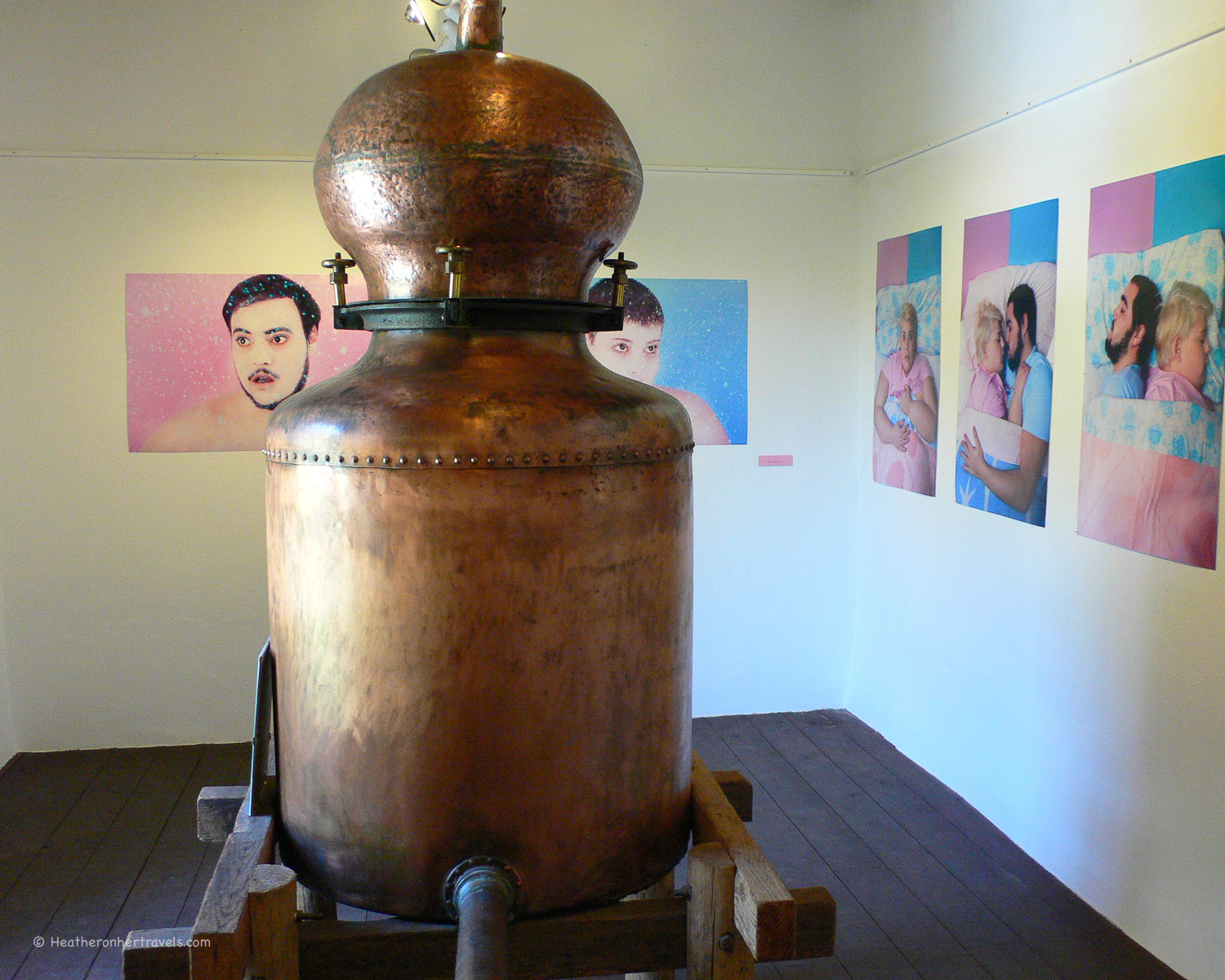
Upstairs we enjoyed the interesting contrast of a sculptural old copper oil still in the same room as some brightly coloured and rather surreal pink and blue photos of a couple in bed.
After our look around the El Molino museum we walked back along the edge of town. We enjoyed the pretty back-streets and back past some more large caves on the side of the town with little streams running down the hillside.
El Refugio de Juanar
Back on the road it was time for a late lunch. We drove on to the nearby El Refugio de Juanar, set up a long track and in the middle of a mountain nature reserve. Once a hunting lodge, the Refugio is now a rather smart country hotel, surrounded by forest walks and trails.
If you were seeking a hideaway from the busy Costa del Sol, this was it. The traditional furnishings and a secluded forest setting felt a million miles from anywhere. Sitting on the terrace, we had some drinks and tapas, looked longingly at the hotel pool. We bought some pretty painted dishes from the souvenir cabinet, wondering how we’d squeeze them into our carry on luggage.
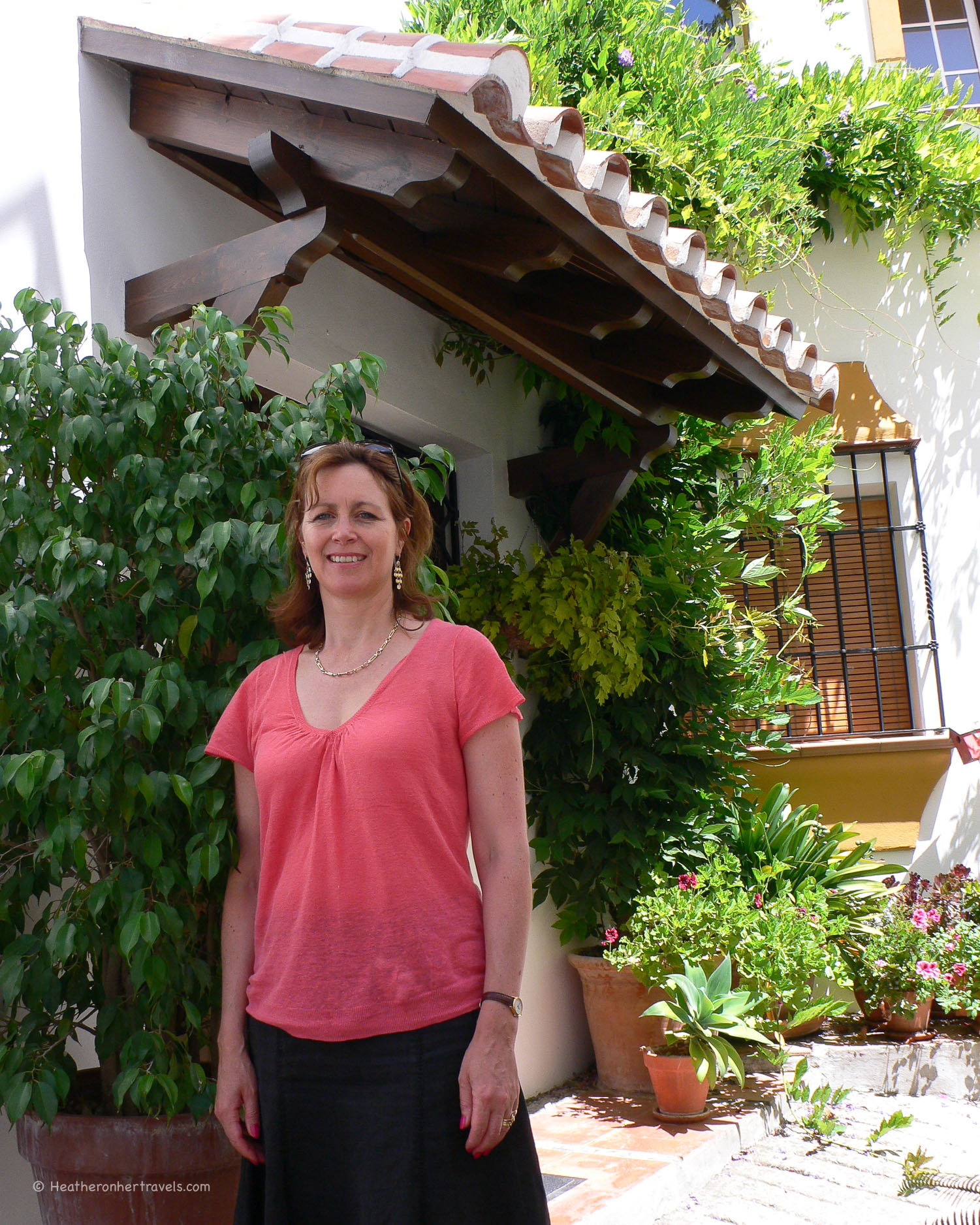
Our drive continued to Monda, hoping we might see more pretty Pueblos Blancos, but found it unremarkable. So, we turned around and drove back to the Costa del Sol, having enjoyed our short trip into the hills behind Marbella.
Read Next
Read about our visit to El Chorro Gorge and the Camino del Rey – near Malaga in Spain
More articles from the south of Spain
Seafood on the beach at the Chiringuito in Spain
Gaudi glitz at the Puerto Marina – Benalmadena, Spain
This article is originally published at Heatheronhertravels.com

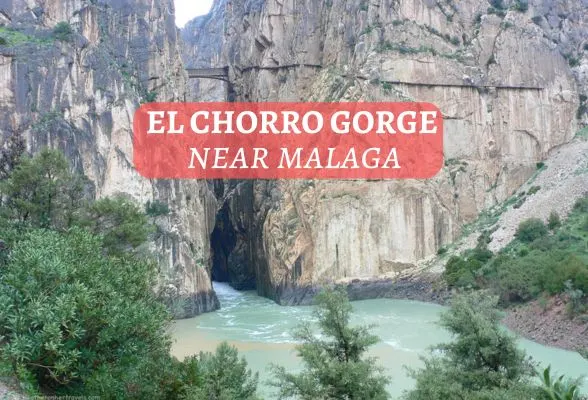

Pedro Bellido
Tuesday 22nd of January 2019
I think that it is a very good post, whit so much information. Thanks for sharing with us, congratulations!
Places to visit by car in Spain | Heather on her travels
Friday 21st of January 2011
[...] A visit to Ojén – the Pueblos Blancos of Andalucia Seafood on the beach at the Chiringuito in Spain 08 Valencia in the Springtime – podcast [...]
Where Heather travelled in 2010 | Heather on her travels
Saturday 1st of January 2011
[...] as Chiringuitos and escaped for a day into the hills behind Marbella to visit the pretty village of Ojén, one of the many Pueblos Blancos or white hill villages that you can visit in [...]
Mijas
Monday 15th of November 2010
Ojen is Absoloutely Amazing.....
@ Emma, I had a look at Frigiliana and i agree with you....It is beautiful. I would to see Heather travel to Frigiliana.
Heather Cowper
Thursday 11th of November 2010
@ Emma Thanks for all the information about Frigiliana - I'll certainly try to pay a visit when I'm next in the area